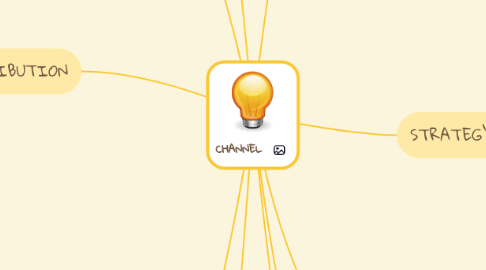
1. THE ROLE OF MARKETING CHANNELS IN MARKETING STRATEGY
1.1. Facilitate the exchange process
1.2. Standardizing exchange transactions
1.3. Facilitate searches by both buyers and sellers
1.4. Adjust for discrepancies in the market's assortment of goods and services via sorting
2. MANAGEMENT AND LEADERSHIP
2.1. Channel conflict
2.1.1. Horizontal
2.1.2. Vertical
2.1.3. Grey Market
2.2. Achieving channel cooperation
3. PHYSICAL DISTRIBUTION
3.1. Customer Service
3.2. Warehousing
3.2.1. Automated Warehouse Techonolgy
3.2.2. Warehouse Locations
3.3. Order Processing
3.4. Protective Packing and Materials Handling
3.5. Inventory Control
3.6. Transportation
3.6.1. Major Transportation Moders
3.6.1.1. Railroad
3.6.1.2. Water carrier
3.6.1.3. Motor Carrier
3.6.1.4. Pipelines
3.6.1.5. Air Freight
3.6.2. Classes of Carriers
3.6.2.1. COMMON CARRIERS
3.6.2.2. CONTRACT CARRIERS
3.6.2.3. PRIVATE CARRIERS
3.6.3. Freight Forwarders and Supplemental Carriers
3.6.4. Intermodal Coordination
4. ALTERNATIVE MARKETING CHANNEL
4.1. CUSTOMER GOOD
4.1.1. Producer-Customer
4.1.2. Producer-Retailer-Customer
4.1.3. Producer-Wholesaler-Retailer-Customer
4.1.4. Producer-Agents-Wholesaler-Retailer-Customer
4.2. BUSINESS GOOD
4.2.1. .Producer-Business User
4.2.2. .Producer-Agent-Business User
4.2.3. .Producer-Wholesaler-Business User
4.2.4. Producer-Agent-Wholesaler-Business User
4.3. SERVICE
4.3.1. Service provider- Consumer/Business User
4.3.2. Service Provider-Agent-Consumer/Business User
5. WHY CHANNEL ARE NEEDED?
5.1. Awareness creation
5.2. More profitable sales
5.3. Brings buyers and sellers together
5.4. Producer can concentrate on core activity
5.5. Reduce the number of transactions and thereby transaction cost
6. TYPES OF MARKETING CHANNEL
6.1. Marketing intemediary
6.1.1. Organization that operates between producers and consumers
6.2. Resellers
6.2.1. Wholesaler
6.2.2. Retailers
6.3. Brokers
6.3.1. Agents
6.4. Facilitators
6.4.1. Transportation companies
6.5. Service firms market
6.5.1. Haircuts, manicures,and dental cleanings all operate through short channel
6.6. Direct selling
6.6.1. Direct channel
6.7. Dual Distribution
6.8. Reverse Channels
6.9. Channels using Marketing Intermediaries
6.9.1. Producer to Wholesaler to Retailer to Customer
6.9.2. Producer to Wholesaler to Business User
6.9.3. Producer to Agent to Wholesaler to Retailer to Consumer
6.9.4. Producer to Agent to Wholesaler to Retailer to Business User
6.9.5. Producer to Agent to Business User
7. STRATEGY DECISIONS
7.1. Selection of marketing channel
7.1.1. Market Factors
7.1.2. Product Factors
7.1.3. Organizational and Competitive Factors
7.2. Determining Distribution Intensity
7.2.1. Intensive
7.2.2. Selective
7.2.3. Exclusive
8. VERTICAL MARKETING SYSTEMS
8.1. Corporate and Administred
8.2. Contractual
8.2.1. Wholesaler-Sponsored Voluntary Chain
8.2.2. Retail Cooperative
9. LOGISTICS AND SUPPLY CHAIN MANAGEMENT
9.1. RFID (Radio Frequency Identification)
9.2. ERP (Enterprise Resource Planning)
9.3. Logistical Cost Control
9.3.1. Third-Party Logistics

